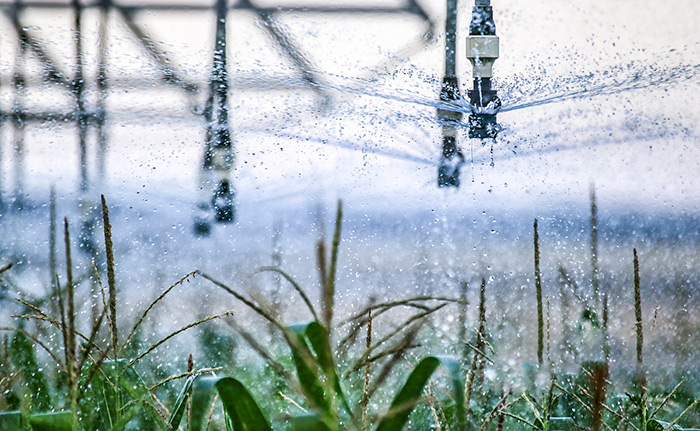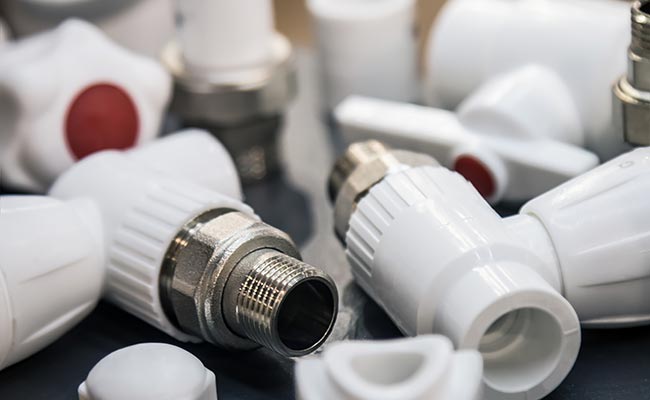Your pump keeps losing its prime, forcing you to manually refill the suction line again and again. This wastes time, risks burning out the pump motor, and stops vital water flow.
A PVC foot valve is a type of check valve combined with a strainer, installed at the very bottom of a pump’s suction line. Its job is to hold water in the pipe, keeping the pump primed, and to block debris.
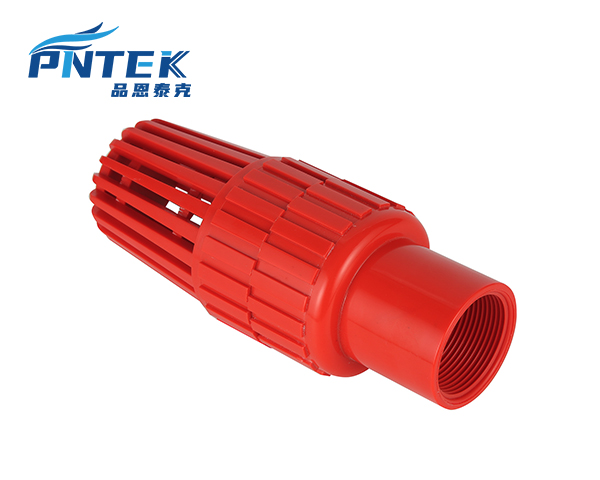
I remember a conversation with Budi about a large irrigation project one of his clients was supplying. They were having constant issues with their pumps. The pumps were installed above the water tanks, and every morning the workers had to spend a lot of time re-priming them. We quickly identified the problem: they were not using foot valves. It is a small, inexpensive part, but its role in the system is huge. Explaining how this simple valve solves such a frustrating and potentially expensive problem is a perfect example of how the right component makes all the difference.
What is the use of PVC foot valves?
You are setting up a pump to draw water from a well, tank, or pond. But how do you stop the water from draining back and keep damaging sand or leaves out of your pump?
PVC foot valves are used on the intake end of suction lines for any pump that is not submerged. They serve two critical functions: keeping the pump primed and filtering the water before it enters the system.
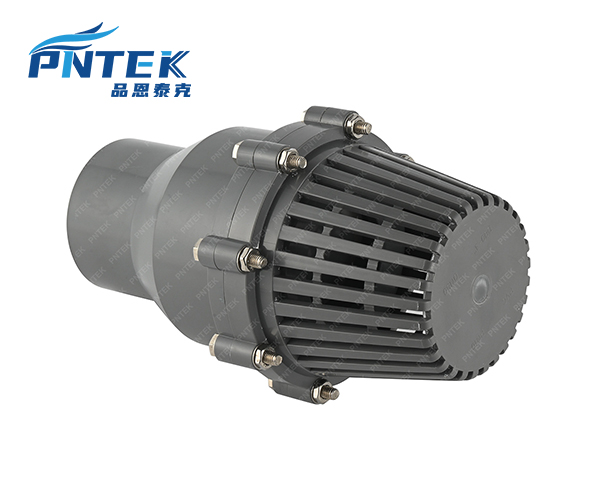
Let’s break down these two uses, because they are both essential for a healthy pump system. First is priming. Most common pumps, like centrifugal pumps, are great at moving water but terrible at moving air. They need a solid column of water in the suction pipe to work. When the pump stops, gravity wants to pull all that water back down into the well or tank. The foot valve acts as a one-way door. Water can be pulled in, but it cannot flow back out. This keeps the pipe full and the pump “primed” and ready to go. Second is filtration. The screen, or strainer, on the outside of the valve is the first line of defense. It stops leaves, pebbles, fish, and other large debris from getting sucked into the pipe. This prevents the debris from jamming the pump’s impeller, which can cause it to wear out or fail completely.
Common Applications for PVC Foot Valves
| Application | Why it’s Needed |
|---|---|
| Well Water Systems | Keeps the pump primed and prevents sand from entering. |
| Irrigation | Prevents loss of prime and stops weeds/debris from clogging sprinklers. |
| Ponds and Lakes | Filters out aquatic life and sediment, maintains prime. |
| Sump Pits | Ensures the sump pump is ready to work instantly when needed. |
| Water Tanks | Holds the prime for pumps drawing water for distribution. |
What is the purpose of a foot valve?
You know you need a foot valve, but you don’t really understand the mechanics. Without understanding the “why,” it is difficult to explain its importance or troubleshoot a faulty system effectively.
The main purpose of a foot valve is to hold the prime of a pump. It achieves this by acting as a check valve that only allows flow in one direction—into the pipe, not out of it.
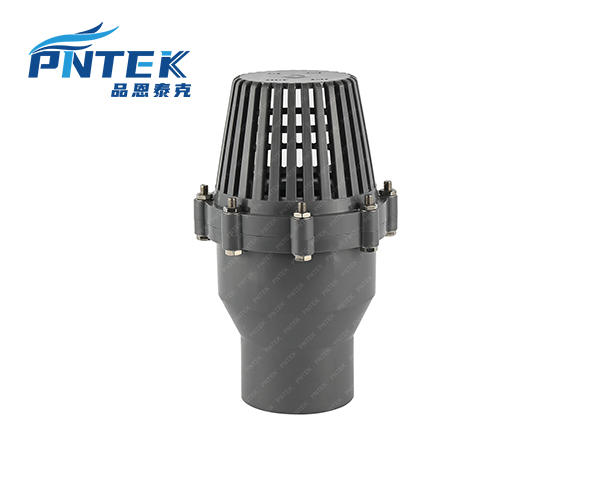
Think of it as a gatekeeper at the bottom of your suction pipe. The core of any foot valve is a check valve mechanism. Inside our Pntek valves, there is a small flap or ball, often held by a spring. When the pump turns on, it creates suction. This suction pressure is strong enough to pull the flap open, allowing water to rush into the pipe. The water then flows up to the pump and out to your system. The moment the pump turns off, the suction disappears. Now, the weight of the entire column of water in the pipe pushes back down on the flap. This pressure, combined with the spring, snaps the flap shut instantly. This traps the water in the pipe. This simple action is the entire purpose: to ensure that when you need to start the pump again, it has water ready to go, preventing it from running dry.
Which is better, brass or PVC foot valves?
You see both brass and PVC foot valves available. You need to know which to recommend, because choosing the wrong material can lead to corrosion, contamination, or unnecessary extra cost for your customers.
Neither is universally better; the best choice depends on the application. PVC is superior for corrosion resistance, chemical compatibility, and cost. Brass is better for high-pressure applications and situations demanding high physical durability.
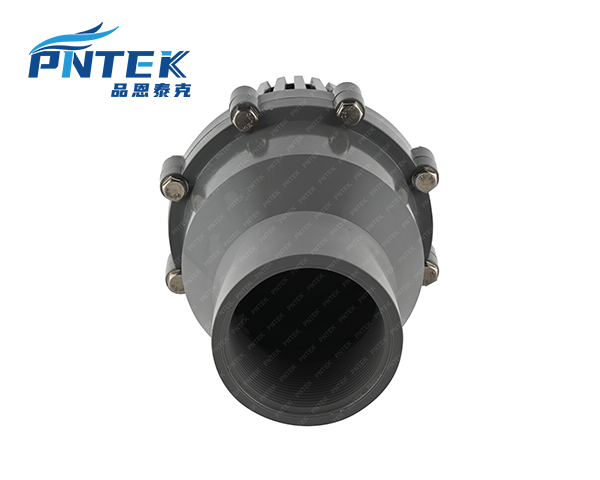
This is a question I often discuss with Budi because his clients face different conditions. For most of his customers in agriculture, aquaculture, or general water transfer, I always recommend PVC. The reason is simple: corrosion. Water in Indonesia, especially groundwater, can have minerals that are corrosive to metals over time. Brass can slowly corrode or suffer from dezincification, eventually failing. PVC is a plastic, so it is completely immune to rust and corrosion. It will last much longer in these environments. It is also significantly lighter and less expensive. However, if a client is dealing with very high pressures or in a situation where the valve might get hit or scraped by rocks (like in a fast-moving stream), then the physical toughness of brass might be a better choice. But for about 90% of standard water pumping applications, PVC offers the best value and longest service life.
PVC vs. Brass Foot Valves
| Feature | PVC Foot Valve | Brass Foot Valve |
|---|---|---|
| Corrosion Resistance | Excellent | Good, but can corrode |
| Cost | Low | High |
| Weight | Very Light | Heavy |
| Chemical Resistance | Excellent | Poor |
| Pressure Rating | Good for standard use | Excellent for high pressure |
| Best For | Wells, irrigation, tanks, pools | High-pressure industrial use |
Can a pump work without a foot valve?
You have a customer who wants to cut costs and asks if they can just leave the foot valve out. You need to give them a clear answer about the risks involved with this decision.
Yes, a centrifugal pump can technically work without a foot valve, but it’s a very bad idea. It will lose its prime every time it shuts off, requiring constant manual re-priming and risking severe pump damage.
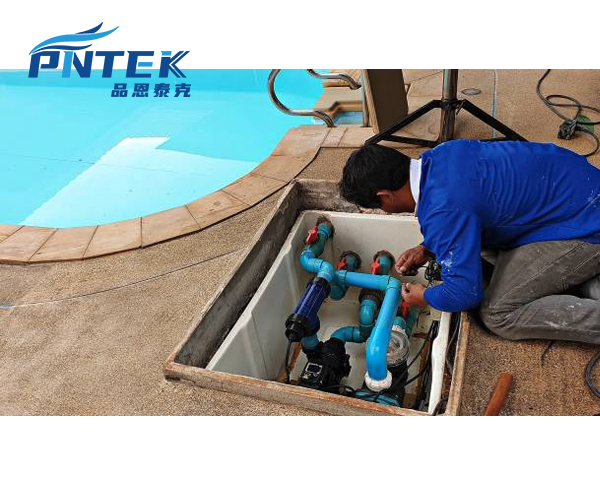
I would tell this customer that trying to save a few dollars on a foot valve could end up costing them hundreds of dollars for a new pump. Here is what happens without a foot valve. The pump runs, then it stops. All the water in the suction pipe immediately drains back into the well. The next time you turn on the pump, the pipe is full of air. The pump’s impeller will just spin, unable to create suction. This is called “running dry.” The water that flows through a pump is not just a product; it is also the coolant and lubricant for the pump’s seals. When a pump runs dry, the seals overheat very quickly. They can melt or crack in less than a minute, causing permanent damage and leaks. The only way to get it working again is to manually pour water into the suction line until it is full. Having to do this every single time is a massive inconvenience that completely defeats the purpose of an automatic pump system.
Conclusion
A PVC foot valve is a vital, low-cost part that protects your pump by keeping it primed and filtering out debris. It is an essential component for a long-lasting and efficient water system.
Post time: Oct-20-2025


